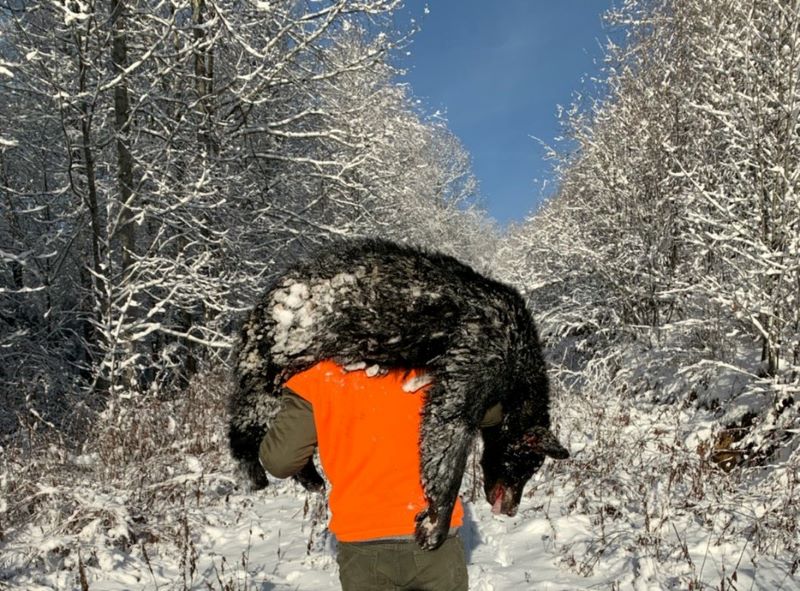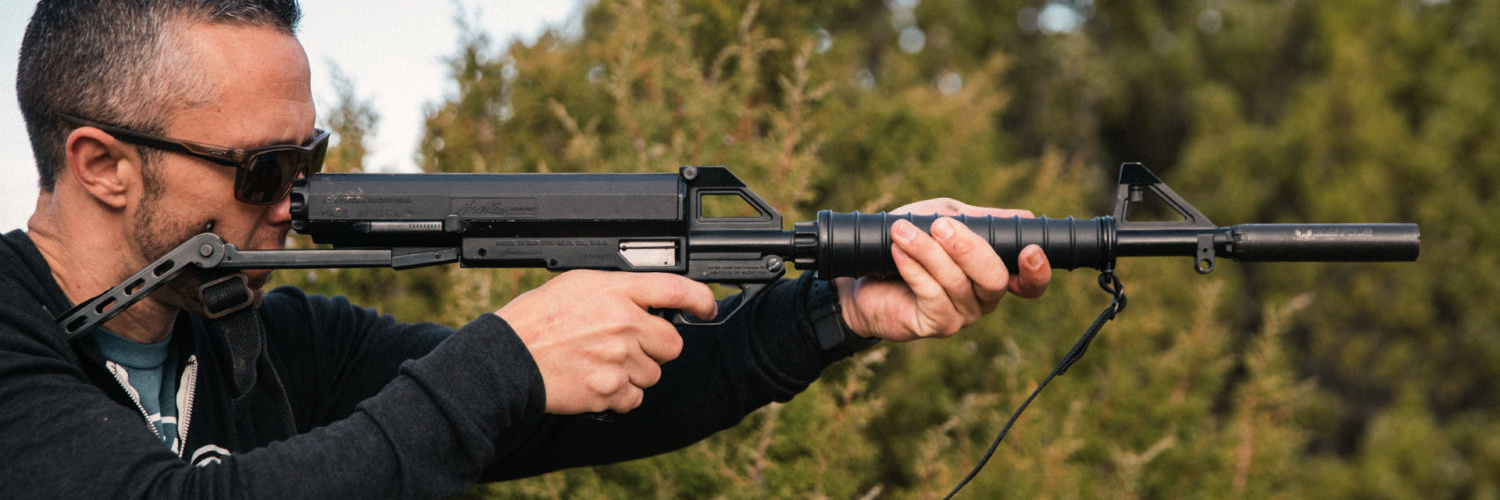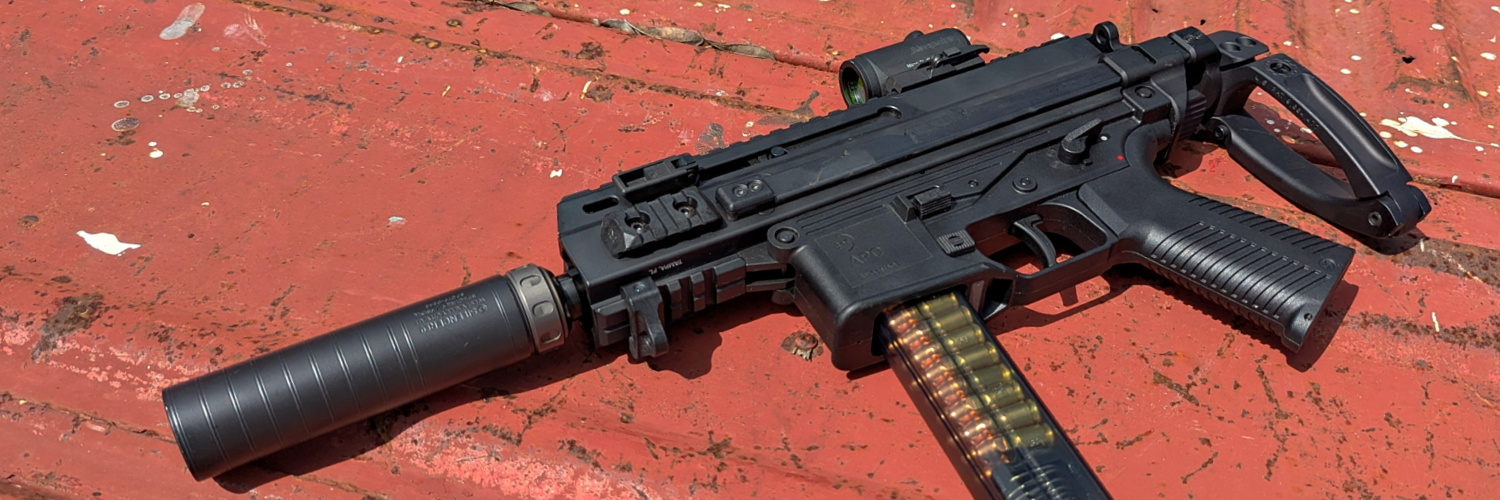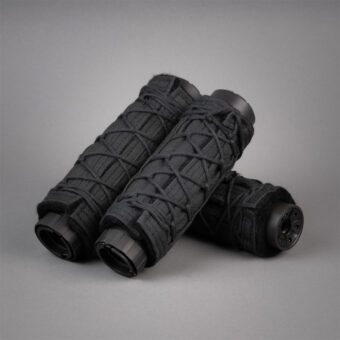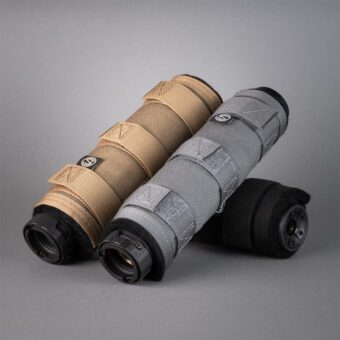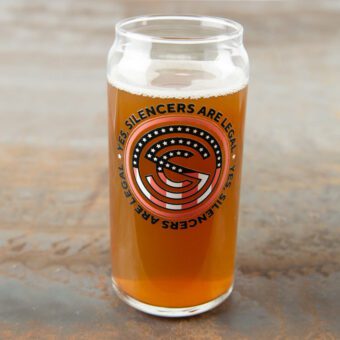Home / All About Silencers / Bear Hunting with the SilencerCo Osprey 45
Home / All About Silencers / Bear Hunting with the SilencerCo Osprey 45
Bear Hunting with the SilencerCo Osprey 45
Larry Case
In this installment of our series on hunting with silencers, retired game warden Larry Case walks us through what it’s like to bear hunt with dogs in the mountains of West Virginia, and particularly bear hunting with the SilencerCo Osprey 45. It’s not for the faint of heart, this one, but it educates us on the tactics and traditions associated using dogs on a bear hunt. ~BB
There are many types of hunters. Some are the casual, random type that may go afield a few nice weekends and climb up in a tree stand or shooting house. Others may be present a few days or a week at deer camp, and there is nothing wrong with any of this, but many of us know there is another class of hunter out there and to them it is a lifestyle, not a hobby.
Bear hunting with hounds in the central Appalachian Mountains is definitely more than a hobby. This country is rough, and it is steep. Generally, when you get out of the truck you can go in two directions – either uphill or down; there is very little level ground.
If you add to this a wide variety of clear-cut areas, such as where our story will take place, you can have an almost hellish combination of topography, thick growth of new trees, briers, rocks and logs. Traversing an area like this can be tough on dogs and humans, it is not for the faint of heart.
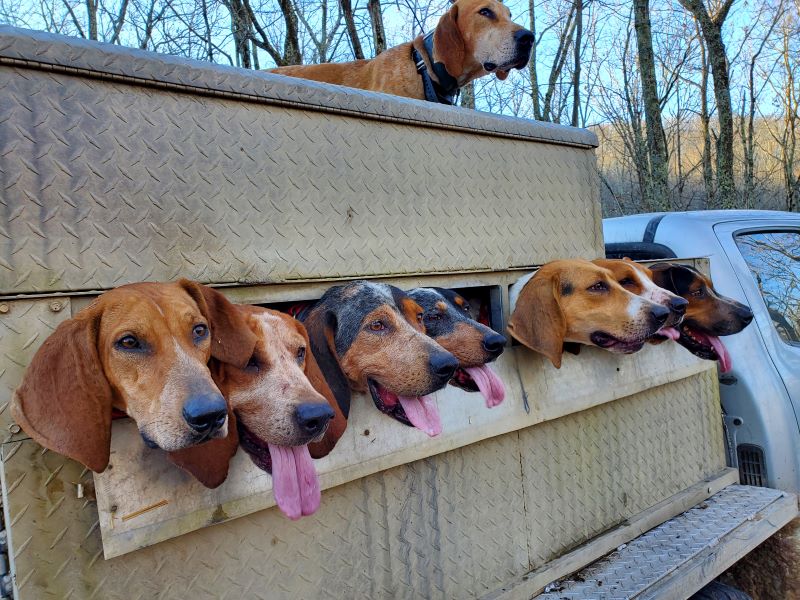
Bear Hound Management
Next, the simple logistics of keeping a pack of bear hounds is a big job. This brand of hunting, running bears with hounds, is not so much a type of hunting as it is a lifestyle. Keeping a pack of bear dogs – the feeding, training, conditioning and caring for several hounds – is a full-time job. These hunters run their dogs almost year-round, so any hound kept in the pen most of the time and only released during season is going to be severely limited in ability.
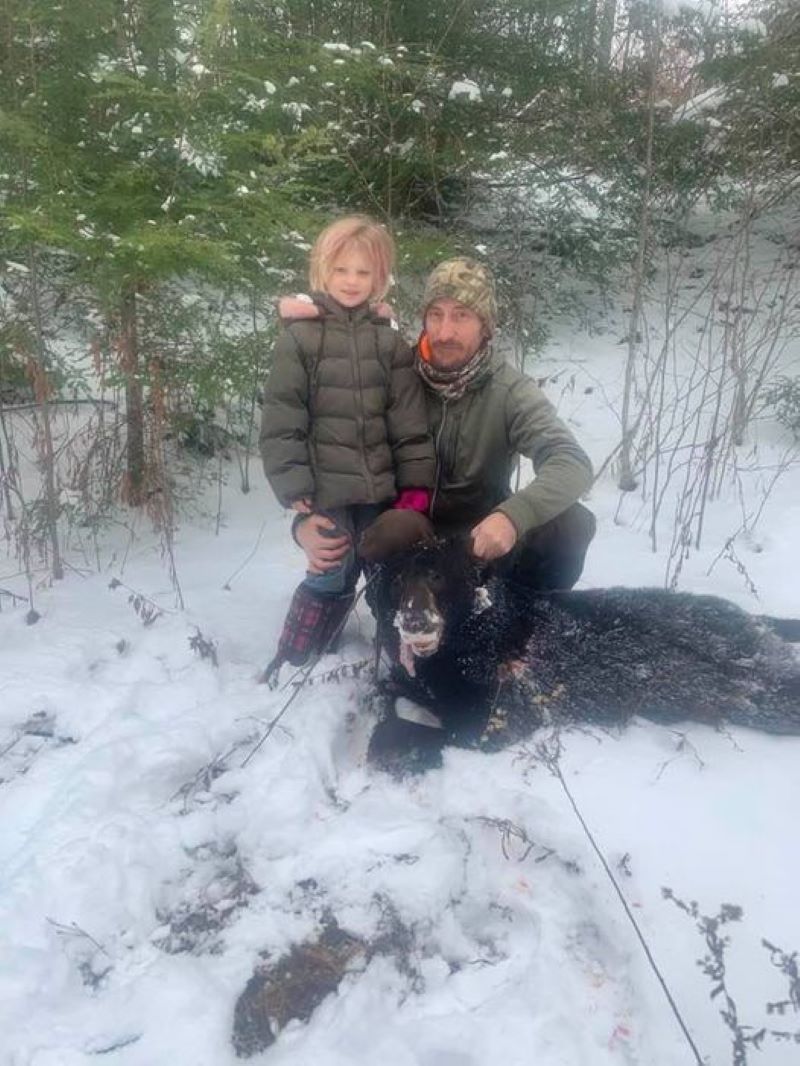
Meet “The Closer,” Kish Justice
Kish Justice, from White Sulphur Springs, West Virginia, is a bear hunter. He’s “the closer,” and you’ll find out why later in this story. There are those that may sometimes hunt bears, and there are bear hunters. Kish is a bear hunter. Born and bred in the Appalachian Mountains, he was introduced to bear hunting, with hounds, at a young age. At 15, he received an invitation to come along with some local bear hunters. That day he first encountered a wild melee of a large bear bayed on the ground. Having no idea what to do, he heard one of the hunters yelling at him, “Get in there and leash some dogs before they all get killed!”
“The pure adrenaline rush at that point is almost indescribable,” Kish remembers. “The hounds were screaming and fighting the bear right in my face. I had never seen anything like it. I was hooked.”
The die was cast, his fate was decided, he was going to be a bear hunter. Kish is certainly not alone in this regard. There are bear hunters in many areas of West Virginia, especially here, in the higher elevations of the Alleghenies, an area with lots of bears and the room to chase them.
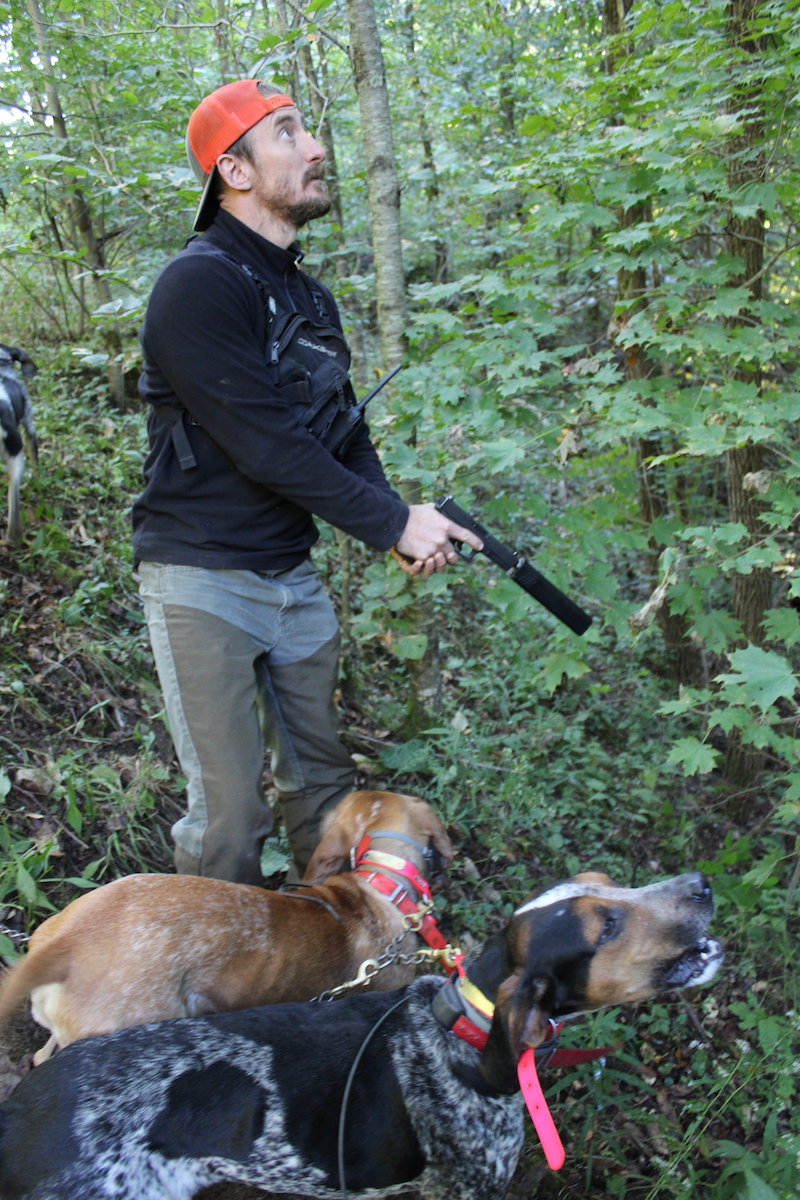
Bear Doggin’ 101
For the uninitiated, a typical bear hunt with hounds would go something like this… Because of the vast amount of territory that needs to be covered, hound hunters will often drive back roads with a “strike dog” riding on top of the dog box, which covers the bed of the truck. The strike dog is often the most prized hound in the pack, a seasoned veteran with a powerful nose that will bark on nothing but the scent of a bear.
If the dog opens up to alert the hunters where a bear has crossed the road, he will be put on the ground to determine how good the track is and if the hound can get it lined out. If the track improves, other dogs will be released and the bear may be “jumped,” meaning the track gets very hot and this will be obvious from the tone of the hounds barking.
A wild chase will now ensue through the mountains. There is no typical length for this task; it can go literally for miles or it may be shorter. It just depends on the bear, the hounds and the terrain.
Typically after a lengthy chase, the hounds will get close and the bear will climb a tree. The hounds will “tree” on the bear, staying there and barking to tell the hunters where they are. Getting to the tree can be a real trek. The bear may have treed close to a logging road that offers some access… or not. If no roads are in the area, getting to the tree can mean a long walk. This can sometimes take hours and the dogs will stay at the tree until the hunters arrive. “No quit” is the biggest thing bear hunters look for in a hound.
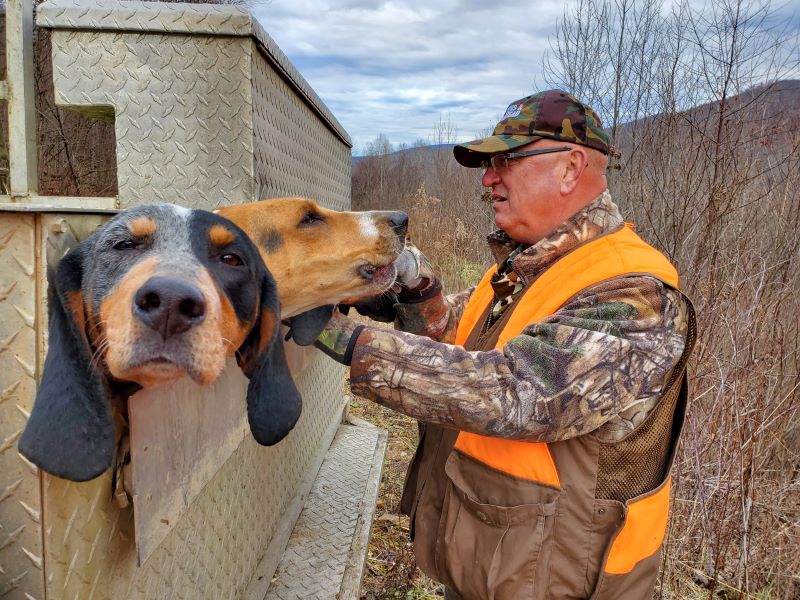
Bear Behavior
Occasionally a bear will refuse to climb a tree and will stay on the ground and fight the dogs. This can lead to all sorts of dicey situations. Generally, the bear will chose an area of dense brush, the thicker the better. Here, he will back up against rocks or logs or anything to guard his rear and fight it out with the dogs. The hounds at this point are in a frenzy to get at the bear, but not too close. Here is where a good bear dog shows his worth as they are trying to keep the bear in place but not get killed while doing it. It is a very fine line, if the dogs can keep the bear from breaking and running off, a hunter may be able to get close enough for a shot, but if they get too close and stay in one place for a split second too long, the bear may severely injure or kill them. It’s not for the faint of heart.
With a bear on the ground, the problem for the hunter becomes how he can dispatch the bear without getting several dogs hurt or killed. If the bear is treed and stays in the tree, the dogs are tied back a safe distance and if the hunters want to harvest that bear, it can be done without injuries to the dogs. With a bear on the ground, the bear must be taken with a shot that puts the animal down immediately. The dogs are conditioned to swarm over the bear after the gun fires.
If the bear is on the ground fighting the dogs, the hunters must try to slip in quietly and take the bear with a well-placed shot, without hitting any dogs. Sometimes this is done at almost point-blank range. You may have guessed this is not easy.
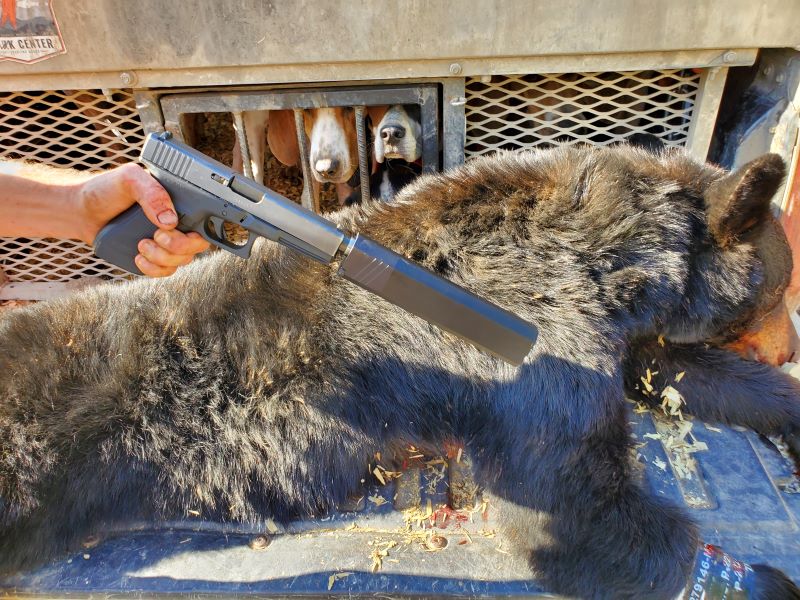
SilencerCo Osprey 45
Now the value of the SilencerCo suppressor comes into play. Several years ago, aforementioned bear hunter Kish decided to put something a little unorthodox into his arsenal. Kish figured for the up-close-and-personal scenario of the bear fight on the ground, he needed exactly what a suppressor could provide. As we have pointed out, if the hunter is able to get in close when this wild scene is taking place, he may be able to get off a shot and take down the bear. With all the noise and confusion, Kish says he has often been able to get in a shot or two and the dogs may not even be aware the shots have been fired because of his suppressor.
For this work, Kish chose the SilencerCo Osprey 45 suppressor on his Glock Model 21. The Osprey is the lightest, quietest and only multicaliber polygonal centerfire pistol silencer on the market. The monocore baffle design in a polygonal package allows for greater internal volume and therefore, better sound performance. The Osprey 45 uses a patented cam locking system to index so that the flat-sight plane can be lined up below a shooter’s line of sight, thereby avoiding blocking most standard pistol sights.
Suppressing the report of the pistol accomplishes two important things. One, the dogs’ hearing is not affected or damaged by the roar of a large caliber handgun going off so close to their ears. Over several seasons, with dogs that are hunted as much as these hounds are, this could mean some serious hearing loss. Next, because the report of the weapon is so diminished and the noise of the bear and dog fight is so loud, the hounds may not even be aware that shots were fired. Kish, and others in his party, have seen this happen time and again and as the dogs do not hear a gunshot, they do not rush in and they stay back until the bear is dispatched.
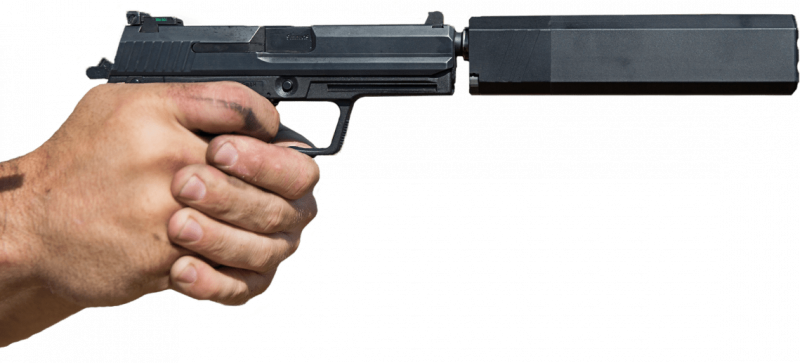
A Bear Hunt to Remember
Such was the case when Kish and fellow hunter Corey Dauwel pursued black bears this past December. They encountered a little more excitement than they were expecting.
This particular hunt found Kish and Corey, along with several other members of their crew, on a hunting lease near Richwood, West Virginia. A timber company owns this land and that means several clear-cuts in the area. This process of clearing the hillside of all trees actually makes for some great wildlife habitat as the new growth regenerates.
It also makes for an area that is very hard to traverse because the brush is so thick. The day and the chase may have started off much like any other bear hunt, but it soon turned into a lot more.
“We found a track in the snow and the dogs jumped this bear and the chase was on,” Kish said.
Setting Up the Scene
On this day in the bear season, the chase did not go too far (for a bear chase) and Corey and Kish tried to make their way through the maze of thick saplings, greenbriers, rocks and old logs. As often happens, the bear heard them coming and broke away from the dogs before coming to bay again about 200 yards away. When they approached this time, Corey noted the bear saw him coming, (he thinks the bear could see the blaze orange vest he was wearing) and almost immediately charged him.
“It is my fault that I was unprepared,” Corey said, “I had my .44 Magnum Smith and Wesson in my pack. I had not taken it out yet because the brush was so thick. I knew better, but that is the situation I was in when the bear came for me.”
And Then This Happened …
As with most bear charges, Corey says that it all happened so fast, it is hard to relate. “About all I could do is turn and run downhill,” he said. “The brush and briers and saplings are so thick here, all you can do push your way through it and hope for the best. I got about 75 or 100 yards down the hill and came to a big log that was about two feet off the ground. I made a dive to go under it and I really thought the bear had me. The only thing that saved me was the dogs were on him and the bear broke away and ran off.”
“I have been charged by bears before, but I am not ashamed to admit that this shook me up,” Corey added. “The bear ran around the hill and bayed again, Kish came down the hill and joined me, but it took me several minutes to settle down. When I went under the log, he [the bear] was right behind me, if it wasn’t for the dogs, he would have been on top of me. All of this only took several seconds.”
When the two hunters advanced on the bayed bear the third time, they were able to get in position and finish the bear with a couple of well placed shots. What they found when they examined the bear maybe explained some of his behavior. “We think this was an older bear,” said Kish Justice. “He was around 200 hundred pounds, but he definitely had the appearance of an old bear. Also, he was missing several toes from what we think was the result of frostbite. You don’t see it that often, but this bear could have crawled into a poor-quality den as a young bear and without enough protection, he could have experienced frostbite on several toes during a harsh winter. Along with this, the nose on this bear showed some damage, also probably from frostbite.”
Explanation About What This Means to a Bear
Missing some toes and claws on both front and back feet means this bear could not climb a tree or would have a hard time doing it, so this would account for him staying on the ground. Handicaps aside, make no mistake, this bear was a tough old veteran of the mountain and was more than capable of defending himself. There is no way to tell for sure, but Kish and Corey believe this is the bear that killed one of their best dogs earlier in the year.
So all’s well that ends well. The bears are going to be here in this wild and rough country and Kish and Corey are going to be here hunting them. It is what they do. Bear hunting here is tough and if you can’t run with the big dogs, stay on the porch. It is tough, but having good hounds and a SilencerCo suppressor makes it a little bit easier.
